Eight Naming Laws in UX Design (Part 2)
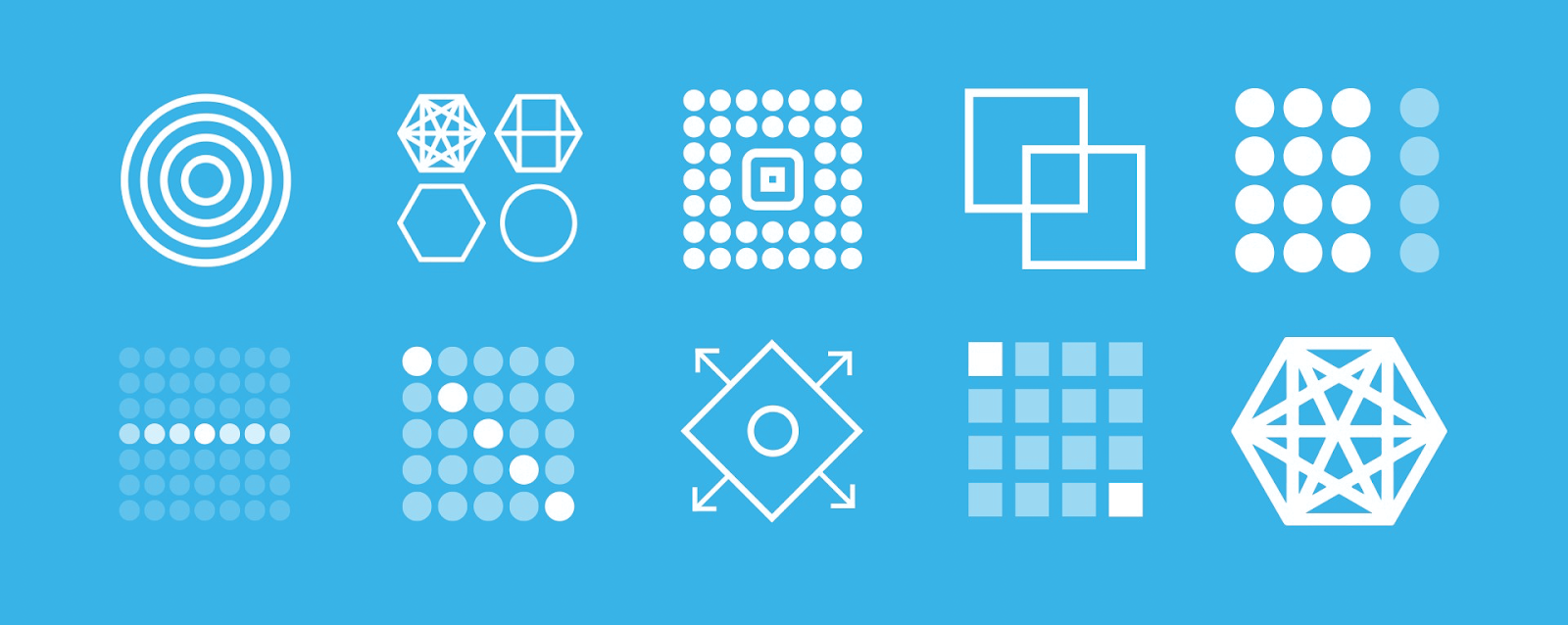
This article is a continuation of the previously published first part . If you have not had time to familiarize yourself with it, I recommend starting with it.
Miller's Law
“The magic number seven plus or minus two” (“Miller’s purse”, “Miller’s law”) is a pattern discovered by the American psychologist George Miller, according to which short-term human memory, as a rule, cannot remember and repeat more than 7 ± 2 elements .In 1956, George Miller, an American psychologist, published an article entitled "The magic number seven plus or minus two: some limitations in our ability to process information."
After a series of experiments in which people needed to distinguish sound signals with different frequencies, the psychologist revealed that if the number of signals is 2 or 3, then the subjects do not have difficulties in determining them. Starting from the 4th signal, minor problems appear. And on the 5th or more sounds, the subjects make mistakes more and more often. In addition to experiments with sound, experiments were also conducted with taste, with visual perception, and others.
Miller summarized the performance of all experiments and got that very number 7 ± 2. It is such a number of elements that the short-term memory of an average person is able to store.
Despite the fact that Miller's law is one of the most popular and cited in the UX design environment, it has almost no relation to user experience and interfaces.This law is a myth, as well as many beliefs arising from it that the number of menu items or the number of list items should not exceed a mark of seven units.
To begin with, the user simply does not need to memorize information, it is already presented in full on his screen, so he can easily operate with a large number of elements. And there is no need to artificially limit this amount to a family.
Human Factors International (HFI), one of the largest companies specializing in user experience design, conducted a study that revealed that voluminous but shallow menus can work better than those that have a large number of nesting.
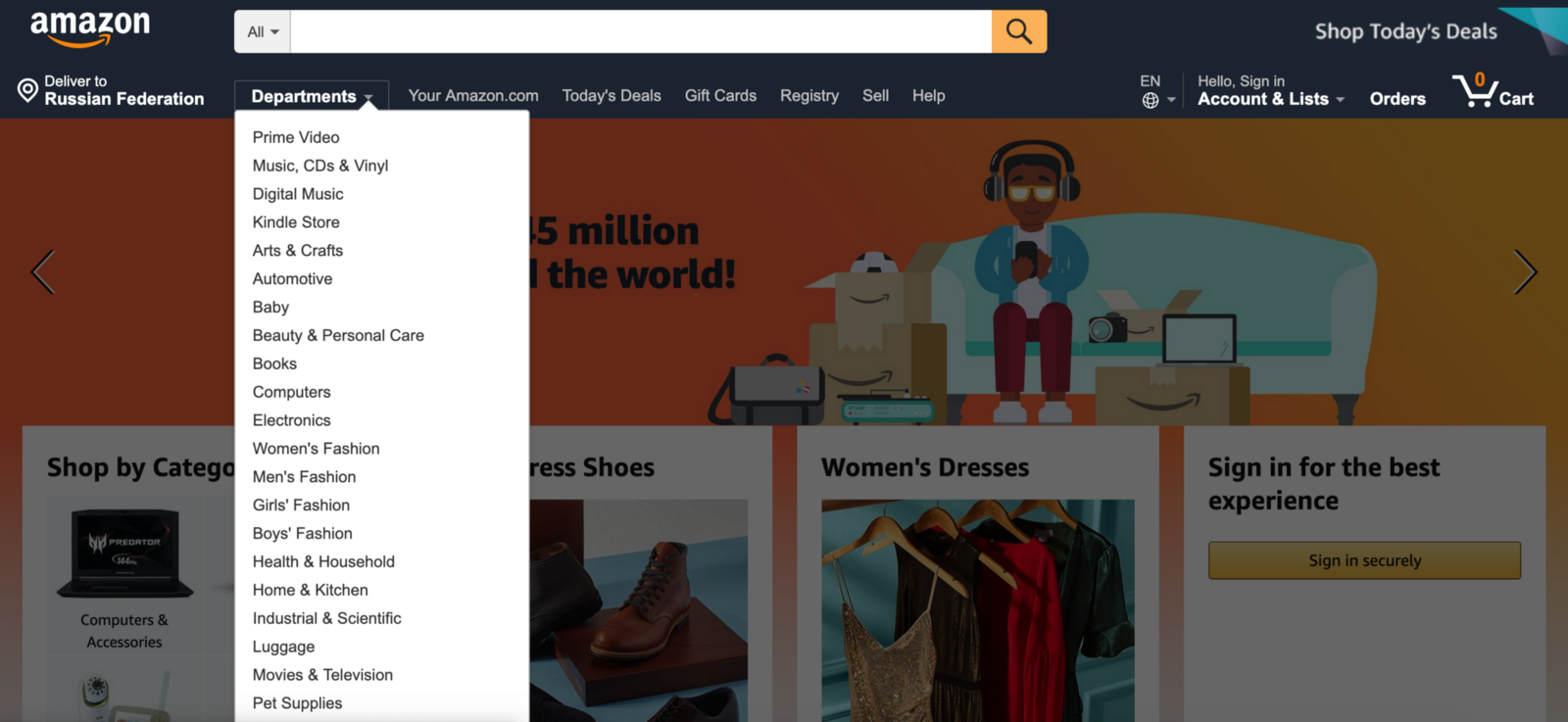
Sections on Amazon
Even George Miller himself was shocked by the extent to which his article was misinterpreted, saying that research was conducted for one-dimensional stimuli (sound, brightness, etc.), and has nothing to do with a person's ability to understand printed text.
Nevertheless, the main conclusion of Miller’s research for UX specialists should be as follows: short-term human memory is limited, so if you want your users to work with more information and remember it, divide the information into portions. Do not ask users to simultaneously store many pieces of information in their short-term memory at once. And do not dwell on the number seven.
Tesler's Law
Tesler’s law, or the law of conservation of complexity, states that for any system there is a certain level of complexity that cannot be reduced.Larry Tesler is an informatics specialist in the field of human-computer interaction. He has worked for companies such as Xerox PARC, Apple, Amazon, and Yahoo. In fact, it was he who introduced the keyboard shortcut Ctrl + C, Ctrl + V.
He argued that each application has a certain degree of complexity. The only question is: who will deal with this? A user, application developer, or platform developer?
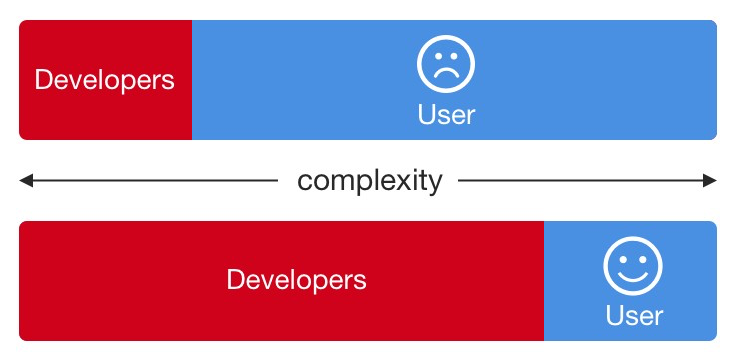
Distribution of system complexity
It takes a lot of work to do something “simple”. By reducing complexity for the user, we transfer complexity to designers, developers.
Let's look at a simple example - the choice of the type of payment system.

The type of payment system is selected by the user. The

type of payment system is substituted automatically.
In the first case, the choice falls on the shoulders of the user, thereby complicating the system for him, but simplifying the development. In the second, the type of payment system is substituted automatically when the user begins to enter the card number. This simplifies the work for the user, since the complexity of the task is reduced by one step. But the development at the same time becomes more difficult.
A common mistake of many product teams is to give as many controls as possible to the user, as if he knows better what to do with it. The designer draws the next bunch of checkboxes, saying in plain text to the user: “Guy, now this is your problem.”
Instead, the team should collect more user information, analyze it, and make that choice for the user.
Kano Model
“Kano Model” is a technique that is used to assess the consumer’s emotional response to individual product characteristics. It allows you to manage customer satisfaction and loyalty, simplifies and optimizes the consumption process.The Kano model was developed in 1984 by Dr. Noriaki Kano.
The Kano model allows designers to better understand the desires of consumers and get rid of unnecessary features in the product. With its help, companies develop strategies and solve tasks to ensure user satisfaction and loyalty.
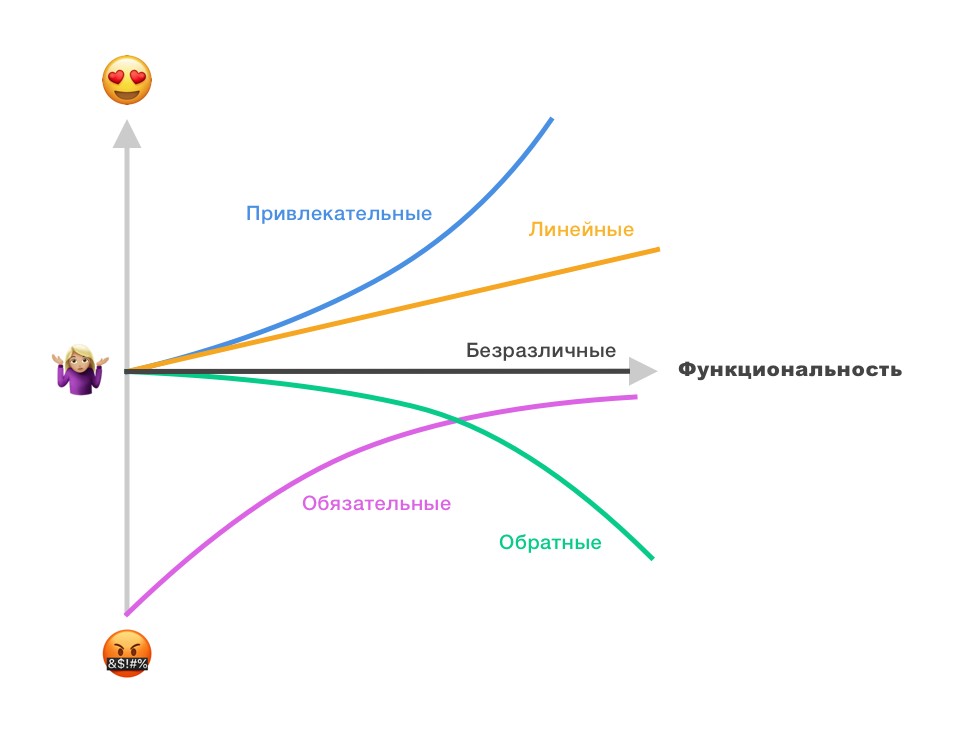
The Kano
Kano model divides all the properties of products into 5 categories:
- Mandatory Features
- Linear characteristics
- Attractive features
- Indifferent characteristics
- Inverse characteristics
Let's look at each of them in more detail:
Mandatory Features
As the name implies, the mandatory characteristics of the product include those without which the product will not work properly. For example, a car without a steering wheel, a smartphone without the ability to make calls, and so on.
Mandatory attributes must be present, because without them the product will not have value for the consumer.
However, as follows from the graph below, the level of fulfillment of the required product characteristics does not directly affect customer satisfaction.
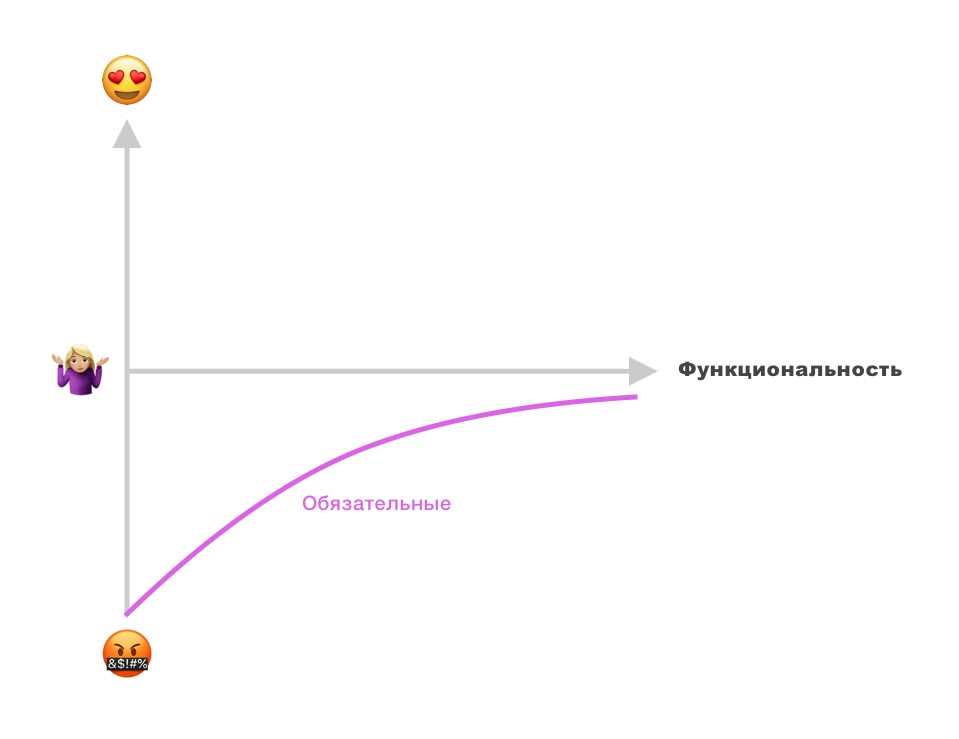
Mandatory characteristics
The very presence of such attributes in the product does not cause them much emotion, since they believe that these attributes should be present in the product by default. But if you miss some basic property, then no other product properties will save the consumer from disappointment.
Linear Characteristics
Linear or one-dimensional characteristics include those from the category "the more the better." For example, the amount of memory, fuel consumption, battery capacity and others. The better the values of these indicators, the higher the customer satisfaction.
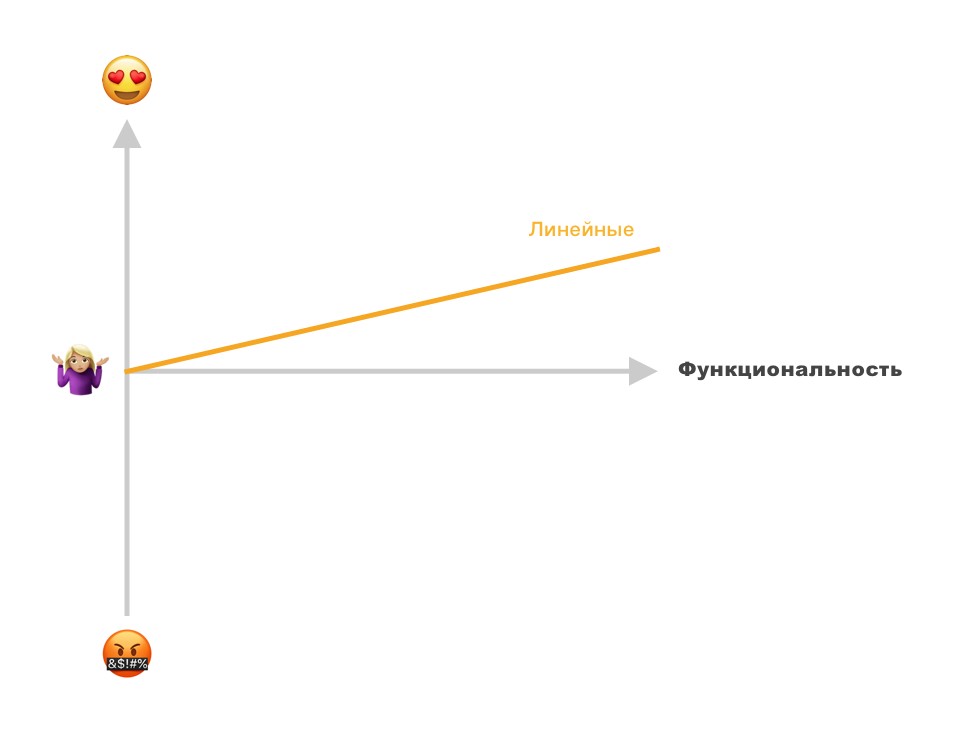
Linear characteristics
As the graph shows, the level of satisfaction with linear characteristics is directly related to the level of functionality of the specified attribute.
Attractive features
Attractive or admirable product features are the killer features of your product. These characteristics at one time included the iPhone Touch ID function, and now Face ID. Automatically unlock your MacBook with your Apple Watch, wirelessly charge smartphones, and more.

Attractive features
The performance level of attractive features does not directly affect customer satisfaction. If a delightful property is missing, consumers will not be disappointed, as they had no expectations for such a property. But on the other hand, if a delightful property is discovered by consumers, then due to the effect of surprise they will be so impressed that they simply will not be able to resist and not share their discovery with others.
Over time, many attractive features become mandatory.
Indifferent characteristics
These are the functions and attributes of the product that the consumer is little or not at all interested in; functionality that does not affect the level of customer satisfaction with the product.
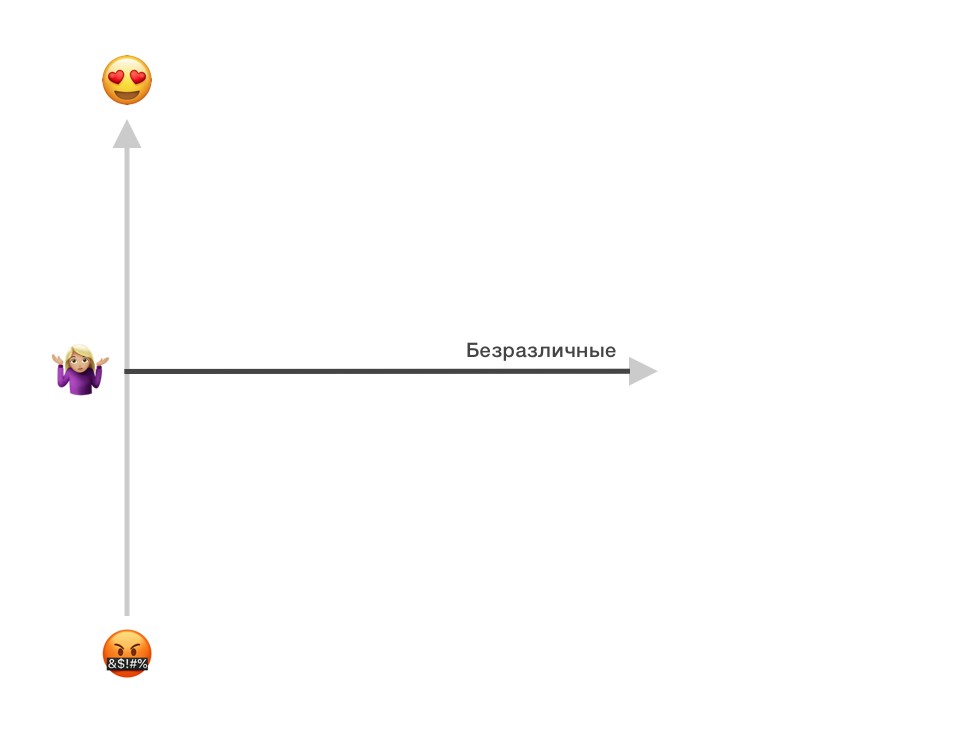
Indifferent characteristics.
An example of such properties is the encryption of photos in Google Photos, the side of the gas tank on the car, and others.
Inverse characteristics
Inverse or undesirable characteristics are those properties of the product that, as their quantity grows, reduce user satisfaction with the product.
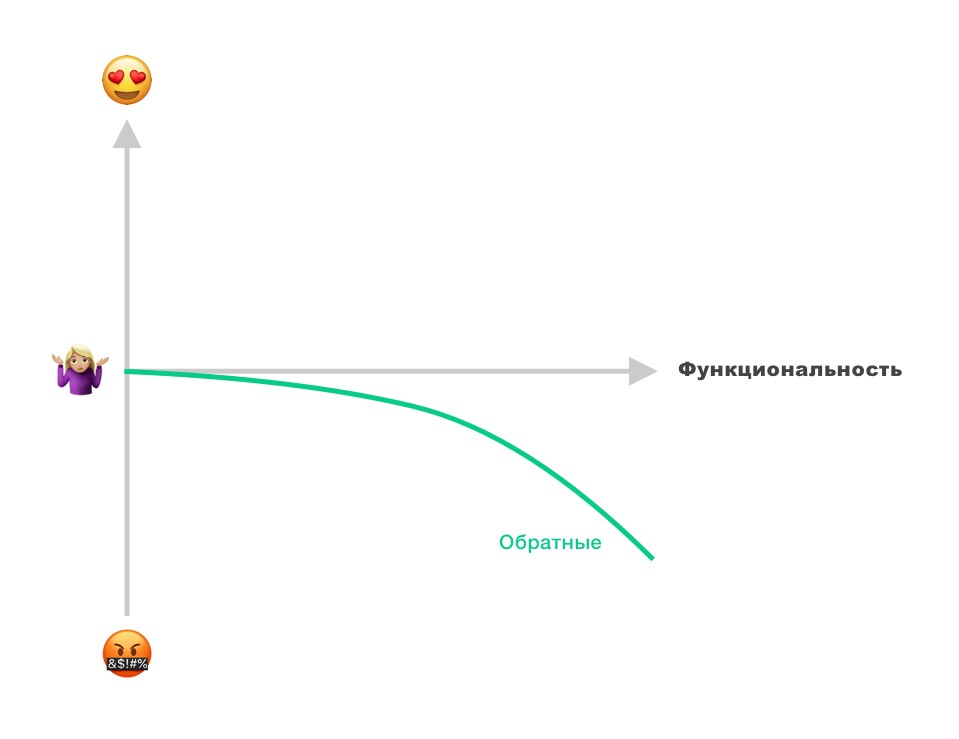
Inverse characteristics
As an example of such characteristics, you can cite a huge number of buttons on the steering wheel of the car that distract the driver, or a car park with a large number of places, but the places in which are so narrow that it is difficult to open the car door.
How to use Kano Model?
In order to use the Kano Model, you will need to conduct a study of the target audience, to identify their vision of the characteristics of your product.
Make a list of features of your product for each type of person. After all, one segment of your consumers will see the dominant value of the product in some characteristics, and others in others. Consider this fact when polling.
Next, let's move on to the survey itself. It consists of only two questions, each of which is asked once for each attribute:
- how would you feel if the product had the following characteristic?
- how would you feel if the product did not have the following characteristics?
As an answer, respondents must choose one of several answer options:
- I would like
- I expect it
- I do not care
- I can live with it
- I would not use the product because of this
Pay attention to the table below:
 Source: https://uxdesign.cc
Source: https://uxdesign.ccIt consists of several categories marked with letters:
A - Attractive - Attractive
O - One dimensional - Linear
M - Must-be - Mandatory
I - Indifferent - Indifferent
R - Reverse - Inverse
Q - Questionable - Questionable (Reflects obscure results that cannot be evaluated)
Thus, each pair of answers at the intersection of rows and columns shows the type of category for this function.
For example, if the user answers “1. I would like "to a functional (positive) question and" 2. I expect this ”to a non-functional (negative) question, then the tested function falls into category“ A ”, i.e. attractive.
Please also note that where you received R - people are not interested in your product, this is not your target audience, and where you received Q, people most likely did not understand the question.
In this way, the Kano Model can help clarify customer requirements for a given product and helps in creating products that result in high customer satisfaction.
Pareto Law
Pareto law (Pareto principle, 80/20 principle) - the rule of thumb in the most general form is formulated as "20% of the efforts yield 80% of the result, and the remaining 80% of the efforts give only 20% of the result."
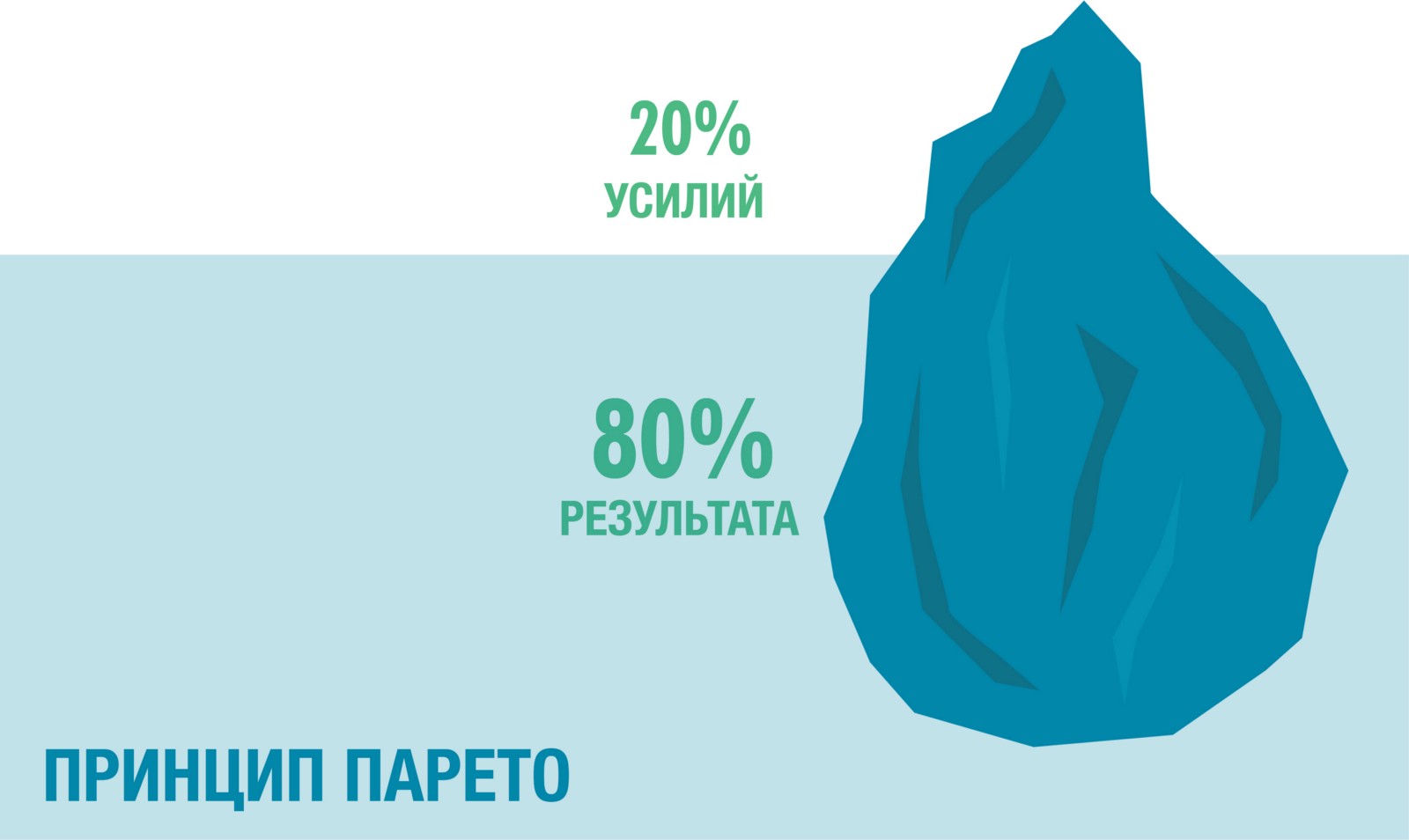 Pareto Principle
Pareto PrincipleThis principle was proposed by management consultant Joseph Juran in 1951, which referred to a particular pattern identified by Italian economist and sociologist Wilfredo Pareto in 1897.
The Pareto Law is useful because it allows us to focus our efforts on areas that are most beneficial. It is used in almost every business discipline.
It does not matter if you are developing a small website or a large and complex application, as soon as you delve into user analytics, you will see that most of the time users work with only a limited part of the functionality. Of course, this does not mean that the rest of the functionality or content does not have any value, but it does mean that some functionality and content are more important for your users than for the rest.
This is important because it allows you to focus your research on the most important things and ensure the safety of these things when you begin to review your user experience. If you do not take this into account, then you will lose users. Conversely, if you can improve the user experience of these key attributes of your product, you are more likely to gain new users and encourage current loyalty.
But it’s not so simple, suppose you received 300 calls to support , 200 of which relate to Problem A , 80 relate to Problem B , and only 20 relate to C. At this stage, it is easy to focus on solving the problem A . But if all requests related to B or C come from users with a paid or premium subscription, and calls related to function A do not, then you can still focus your efforts on fixing B or C first .
Pareto Law offers a way to focus your energy and efforts on creating a user experience. It will help you get a clear idea of what is relevant to your users and business so that you can set priorities and solve the right design tasks.
Everything written above is not an axiom, but rather a set of simple principles and recommendations, using which you can significantly improve the user experience and avoid typical usability problems of the product.
Thank you for taking the time to read this article, I hope it was useful to you.
